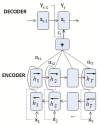Attention Mechanisms and Their Applications to Complex Systems
- PMID: 33652728
- PMCID: PMC7996841
- DOI: 10.3390/e23030283
Attention Mechanisms and Their Applications to Complex Systems
Abstract
Deep learning models and graphics processing units have completely transformed the field of machine learning. Recurrent neural networks and long short-term memories have been successfully used to model and predict complex systems. However, these classic models do not perform sequential reasoning, a process that guides a task based on perception and memory. In recent years, attention mechanisms have emerged as a promising solution to these problems. In this review, we describe the key aspects of attention mechanisms and some relevant attention techniques and point out why they are a remarkable advance in machine learning. Then, we illustrate some important applications of these techniques in the modeling of complex systems.
Keywords: attention; complex and dynamical systems; deep learning; neural networks; self-attention; sequential reasoning.
Conflict of interest statement
The authors declare no conflict of interest.
Figures











References
-
- Yadan O., Adams K., Taigman Y., Ranzato M. Multi-GPU Training of ConvNets. arXiv. 20131312.5853
-
- Sutskever I., Vinyals O., Le Q.V. Sequence to Sequence Learning with Neural Networks; Proceedings of the NIPS 2014; Montreal, QC, Canada. 8–13 December 2014.
-
- Goodfellow I., Bengio Y., Courville A. Deep Learning. MIT Press; Cambridge, MA, USA: 2016. [(accessed on 26 February 2021)]. Available online: http://www.deeplearningbook.org.
Publication types
Grants and funding
LinkOut - more resources
Full Text Sources
Other Literature Sources

